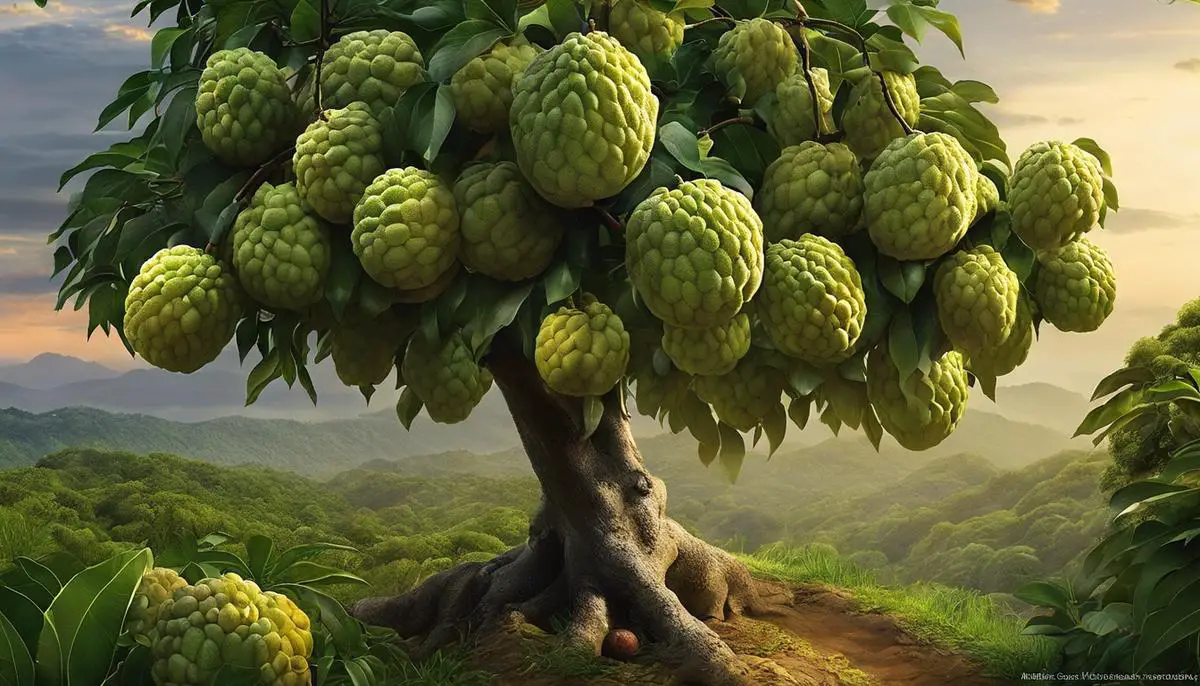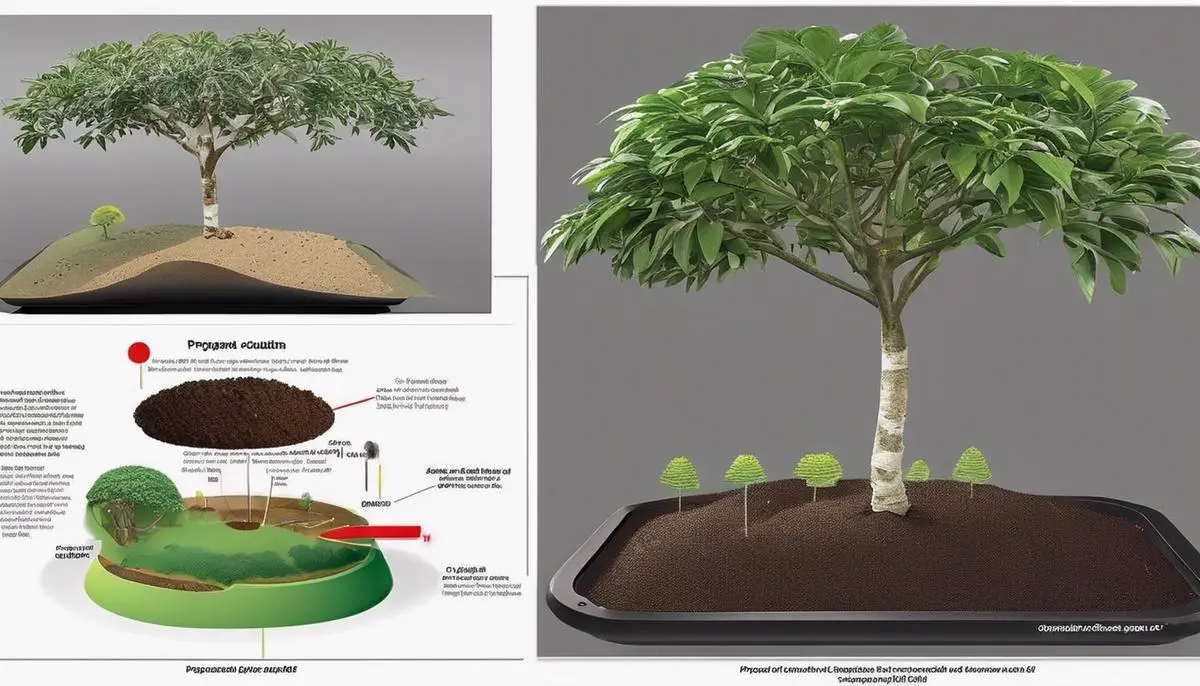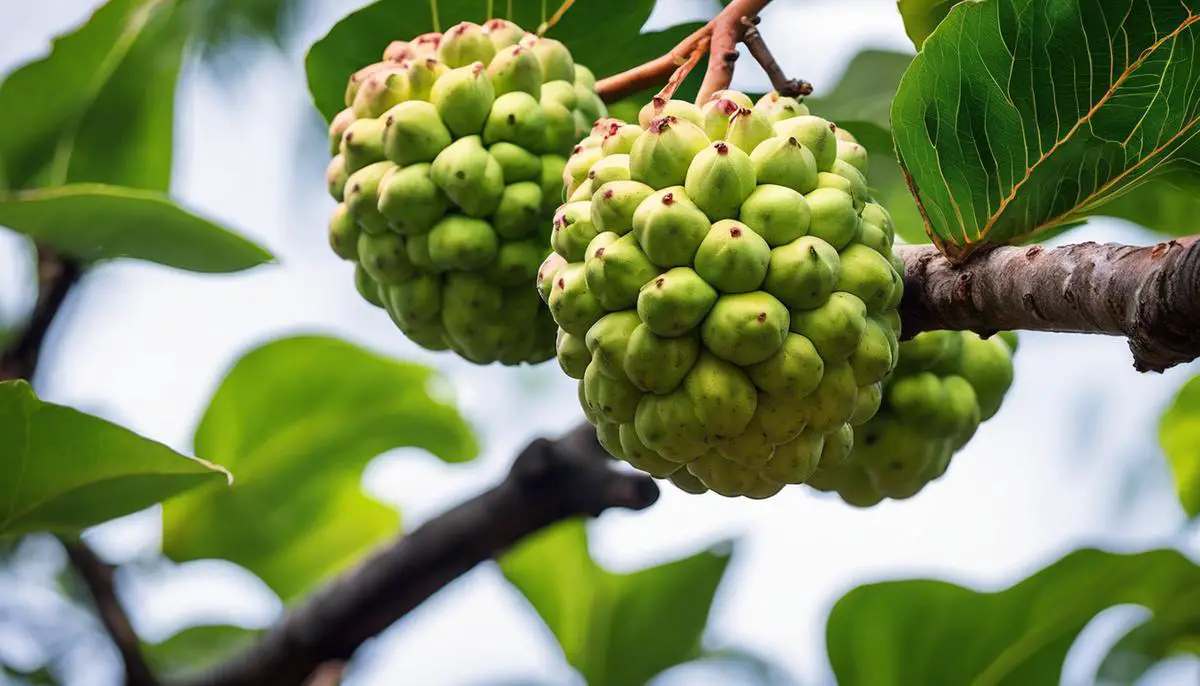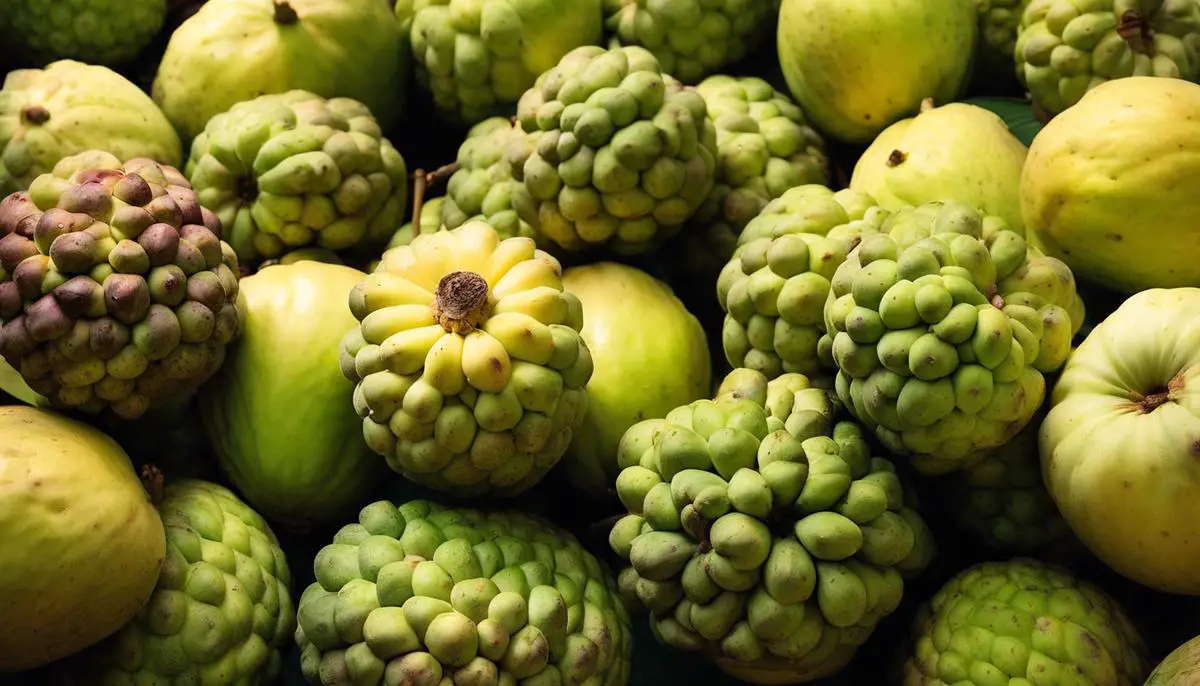Rich in flavor and nutritional benefits, the Custard Apple tree is truly a gift from Mother Nature. This garland of nature’s opulence silently grows gathering sunlight, water, and vital nutrients to bear the fruit that delights our palate while servicing our health. Understanding the growth process, care requirements, and potential threats to the Custard Apple tree aids in informed gardening decisions for hobbyists and professionals alike. Furthermore, knowing the correct propagation methods and harvesting times for custard apples create opportunities for foodies and culinary enthusiasts to harness the fruit at its finest. This exploration aims to shed light on all these factors in a comprehensive and easily digestible format.
Growing Conditions and Care of a Custard Apple Tree
Favorable conditions for growing a custard apple tree, or Annona reticulata, are crucial for its optimum growth and fruit-bearing capacity. This type of tree thrives well in warm subtropical or tropical climates with temperatures ranging from 73 to 94 °F. Mild cool climates are also tolerable but any exposure to frost can cause significant damage. It’s a lover of sunshine, so a sunny spot in the garden will certainly please it. However, it’s also able to bear some shade. As custard apple trees tend to be relatively small, they aren’t a bad choice for those with limited space, but they do like a bit of elbow room, ideally, around 15 feet away from other trees and structures.
A customer apple tree appreciates rich soil with good drainage. Loamy or sandy soil types are suitable as they both offer excellent drainage, but this tree can adapt to many soil types, providing they aren’t consistently waterlogged. The soil acidity should ideally be within the pH range of 5 to 7. Despite this tree’s adaptability, care must be taken to ensure that the soil remains consistently slightly moist, but not soggy – overwatering can lead to root rot. Additionally, these trees require a good mix of potash, nitrogen, and phosphate in their diet. Regular fertilizing with organic materials like compost or chemical fertilizers will encourage robust health and productivity giving you the best chance for a bountiful crop of this aromatic, creamy, tropical treat.

Propagation of Custard Apple Trees
Digging into the actual propagation process, custard apple trees are typically propagated by seeds or grafting. When propagating by seed, it’s vital to remember that not all seeds will germinate and therefore it’s recommended to plant more seeds than the number of trees you intend to grow. Once the seed of a ripe custard apple is cleaned, it can be directly sown into a pot filled with well-draining soil. Ensure to water sparingly as overwatering can lead to root rot. It may take anywhere from 30-60 days for the seed to sprout, so patience plays a key role in this approach. Also, worth noting is, plants propagated by seed can take notably longer to bear fruit, often making this method less preferred for commercial growers.
Switching to the alternative method, grafting. This is a horticultural technique that involves physically joining two plants into one. In simple terms, a successful graft will have a scion (branch) from one tree growing on the rootstock (root system) of another. Spring is generally a good time to graft custard apple trees as the tree is in its active growing phase. In this method, a vigorous rootstock from a seedling is selected and a scion, often taken from a mature tree known for its fruit production, is attached. The union site is wrapped tightly and often coated with wax or a similar material to prevent dehydration. After the graft has taken, usually evident by the growth of new shoots and leaves, the top part of the rootstock is cut away. Grafting provides a quicker route to fruit production and ensures fruit quality by utilizing superior genetic material.
To maximize success in propagating custard apple trees, monitoring is key. Regular checks for pests and disease can prevent minor issues from escalating into major problems. Applying appropriate and timely interventions will greatly enhance the overall health, growth, and productivity of the trees. Similarly, following guidelines on watering, fertilizing, and pruning can significantly influence the growth of your custard apple trees. Happy cultivating!

Pests and Diseases Affecting Custard Apple Trees
The cultivation of custard apple trees is no small task, it’s a hobby that presents challenges as well as rewards. Among some of the main issues, devotees might face are the pesky pests and diseases that can inflict considerable damage to these lovely trees.
Common pests that target custard apple trees include mealybugs, scales, and mites. Mealybugs are small, white insects that cluster on leaves, stems, and fruit, reducing tree vigor and sometimes leaving a sooty mold on the fruit. Scales are tiny insects that attach themselves firmly to tree bark, sucking the sap and causing leaf yellowing and sometimes even death. Mites, on the other hand, are minuscule arachnids that suck out tree juice causing discoloration, leaf drop, diminished tree vitality, and -in severe infestations- death. Treating these pests usually involves horticultural oils or insecticidal soaps.
Unfortunately, the troubles don’t stop with the pests. The custard apple tree may also be vulnerable to diseases such as anthracnose, leaf spot, and canker. Anthracnose, caused by a fungus, is common and can result in considerable fruit loss. It presents as water-soaked spots on the fruit which darken and grow, eventually leading to rot. Leaf spot manifests as brown spots with yellow halos on leaves, causing them to eventually fall off. Canker begins as sunken, discoloured areas on the branch which, if untreated, can grow and girdle -or encircle- the branch, leading to its death. To manage these maladies, strategies like the removal of affected areas and application of copper-based fungicides are oftentimes used.
Cultivating custard apple trees isn’t just about planting and watering but also about using proper observation and timely intervention to keep these pests and diseases at bay. Growing these trees is indeed a gratifying hobby, but it’s not for the faint of heart. With attentive care, however, you might just bite into the fruitful (pun intended) rewards of your hard work.

Harvesting and Uses of Custard Apple
Begin harvesting custard apples when the color shifts from green to light yellow or brown. Fruits will soften when pressed lightly. It’s better to harvest slightly early and let them ripen in a dark place, as ripe fruits might drop or suffer damage on the tree. Always use scissors or pruning shears to avoid causing injury to the trees, and handle the fruits delicately, considering their soft and easily bruised nature.
Enjoy the luscious pulp directly by slicing the fruit horizontally and scooping out with a spoon, leaving the seeds behind. Custard apples, rich in antioxidants and vitamins, are fantastic in smoothies, ice creams or fruit salads too. However, remember to strain out the seeds as they are not edible. For a natural sweetening agent, look no further than custard apple puree, it’s a perfect cake or pie ingredient. For storage, ripe custard apples can be refrigerated up to 5 days or puree can be frozen up to 6 months.
Custard apple tree’s secondary purpose is often overlooked. The applied paste of its leaves can deter common garden pests. Moreover, a concoction made from the bark can be used as a natural pesticide. Even the seeds, though inedible, prove advantageous in compost piles, accelerating the decomposition process. So, from its fruit to foliage, every bit of this tree contributes pushing custard apple to a revered spot in any horticultural hobbyist’s garden.

By understanding and adopting best practices for the growth and care of Custard Apple trees, one can enhance the health and yield of these fruit-bearing wonders significantly. Expand the efficacy of propagation techniques and mitigate the impacts of common pests and diseases to ensure a thriving tree. The bounty of custard apple harvest is more than just a delightful snack; it is an asset to both culinary lovers and proponent of natural remedies. The versatility and richness of the Custard Apple fruit’s uses are truly remarkable. Ultimately, embracing the fruitful wisdom about Custard Apple trees can create opportunities for growth and inspiration in your own garden.